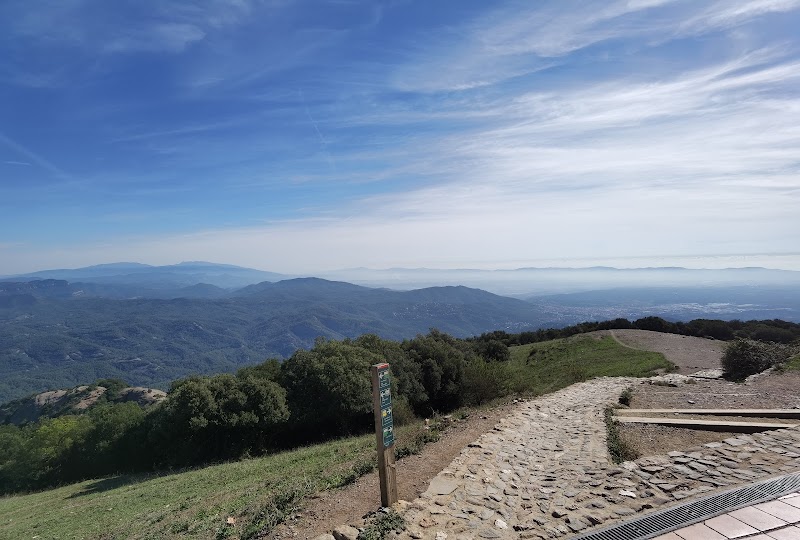
Festa Major de Gràcia: A Vibrant Urban Adventure in Barcelona
Festa Major de Gràcia in Barcelona bursts with energy and creativity each August, transforming city streets into vivid stages of culture and community. Explore this urban adventure where vibrant decorations, live performances, and local traditions invite you to experience Catalonia’s spirited summer celebration.
Wear Comfortable Footwear
Expect to walk several kilometers along crowded, uneven cobbled streets; sturdy, breathable shoes will keep you comfortable throughout the day.
Hydrate Frequently
Barcelona’s August heat can be intense. Carry water with you and drink regularly, especially during midday explorations.
Use Public Transport
Parking is limited and streets close during the festival. Opt for metro or buses to reach Gràcia efficiently and avoid traffic headaches.
Plan Evening Visits
For the best atmosphere and cooler temperatures, visit after sunset to witness fireworks, live music, and the vibrant nightlife ambiance.
Festa Major de Gràcia: A Vibrant Urban Adventure in Barcelona
Each August, the streets of Barcelona’s Gràcia neighborhood transform into an immersive playground for locals and travelers alike during Festa Major de Gràcia. This week-long celebration pits creativity and community spirit against the summer heat, creating an experience where color, sound, and culture fiercely hold their ground. Imagine navigating narrow lanes lined with elaborately decorated façades, each street competing to outdo the next in theme and detail—a contest rooted in pride and craftsmanship.
The heart of the festa pulses through its streets rather than distant trails, offering an adventure of cultural discovery and sensory engagement. Visitors can expect to walk several kilometers each day as they weave through vibrant corridors thick with crowds, music, and the scent of traditional Catalan cuisine wafting from open windows. The physical rhythm of this experience demands comfortable footwear and readiness to stand, explore, and immerse for hours.
Planning your Festa Major visit means practical timing. Arriving midweek can avoid the weekend crowds, giving you a better chance to appreciate the intricate decorations up close. Keep hydration close; Barcelonian August days push past 30°C (86°F) with humidity that dares you to keep pace. Lightweight clothing and sun protection become your allies. Evening programs introduce live concerts and casteller performances—human towers that climb toward the summer sky, a true display of teamwork and local tradition.
Though urban, the festival’s energy connects you to a community that’s fiercely itself, blending modern life with cultural roots. Each street is a microcosm of narrative and creativity, engaging visitors in an explorative flow that respects the space and tradition. Festa Major offers a form of adventure that tests your curiosity, endurance, and open heart.
For practical logistics, Gràcia is accessible by several metro stops (L3 and L4 lines) and is well serviced by buses from central Barcelona. Accommodation tends to book fast—reserve early to avoid disappointment. Despite the crowded streets, safety is generally excellent, but keeping an eye on belongings is wise in dense pockets.
Prepare for sensory overload: colors dart through your vision, snippets of Catalan chatter bounce off the walls, and fireworks punctuate the night air with crackling energy. This is an urban trek where your route winds through traditions and modern expressions, every step a beat in the festival’s lasting pulse. Festa Major de Gràcia challenges you not to conquer but to move with its beat—respectful, curious, and ready to revel.
Nearby Trips
All Adventures
Boat Charters
Water Activities
Adventures near Barcelona, Catalonia
Discover the unique and memorable adventures that make Barcelona, Catalonia special.
Frequently Asked Questions
What makes the street decorations of Festa Major de Gràcia unique?
Each street in Gràcia competes by creating elaborate, thematic decorations crafted entirely by local residents, often reflecting historical or cultural stories that engage creativity and community pride.
Are there food options suitable for families at the festival?
Yes, many stalls and local restaurants serve traditional Catalan dishes that cater to all ages, including kid-friendly options like pa amb tomàquet (bread with tomato) and churros.
Is the festival accessible for people with mobility issues?
While Gràcia’s narrow and sometimes cobblestoned streets can be challenging, the event organizers provide accessible routes and assistance points. Planning ahead with local resources is recommended.
Can I attend the casteller (human tower) performances safely?
Casteller events are well-organized and monitored; spectators can safely enjoy these impressive human towers from designated viewing areas, making it a highlight of the festival.
What local wildlife might I notice during the festival?
While the festa is urban, you might spot common city birds like swifts and sparrows animated by the buzz of the crowd, adding to the dynamic atmosphere.
Are there quieter times during the festival to avoid crowds?
Early mornings and midweek are generally less crowded, allowing a more relaxed experience of the decorations and local shops.
Recommended Gear
Comfortable Walking Shoes
Supportive footwear will reduce fatigue on uneven cobblestones and during prolonged standing.
Reusable Water Bottle
Staying hydrated in Barcelona’s heat is crucial during daytime wandering.
Light Hat and Sunglasses
Protects against harsh sun during outdoor events and mid-day explorations.
Portable Phone Charger
Helps keep devices powered for maps, photos, and translation apps during long festival days.
Local Insights
Hidden Gems
- "Plaça de la Virreina offers a quieter vantage point with excellent views of decorated streets."
- "Carrer Verdi is a lively street that combines artistic flair with local cafes away from the main rush."
Wildlife
- "Common city pigeons and sparrows enliven the open plazas and balconies during festival days."
History
"Festa Major de Gràcia started as a neighborhood celebration in the 19th century, growing into one of Barcelona’s most beloved summer events—a local assertion of community identity."